CD4+ T cells and complement independently mediate graft ischemia in the rejection of mouse orthotopic tracheal transplants
- PMID: 21998328
- PMCID: PMC3243047
- DOI: 10.1161/CIRCRESAHA.111.250167
CD4+ T cells and complement independently mediate graft ischemia in the rejection of mouse orthotopic tracheal transplants
Abstract
Rationale: While microvascular injury is associated with chronic rejection, the cause of tissue ischemia during alloimmune injury is not yet elucidated.
Objective: We investigated the contribution of T lymphocytes and complement to microvascular injury-associated ischemia during acute rejection of mouse tracheal transplants.
Methods and results: Using novel techniques to assess microvascular integrity and function, we evaluated how lymphocyte subsets and complement specifically affect microvascular perfusion and tissue oxygenation in MHC-mismatched transplants. To characterize T cell effects on microvessel loss and recovery, we transplanted functional airway grafts in the presence and absence of CD4(+) and CD8(+) T cells. To establish the contribution of complement-mediated injury to the allograft microcirculation, we transplanted C3-deficient and C3-inhibited recipients. We demonstrated that CD4(+) T cells and complement are independently sufficient to cause graft ischemia. CD8(+) T cells were required for airway neovascularization to occur following CD4-mediated rejection. Activation of antibody-dependent complement pathways mediated tissue ischemia even in the absence of cellular rejection. Complement inhibition by CR2-Crry attenuated graft hypoxia, complement/antibody deposition on vascular endothelium and promoted vascular perfusion by enhanced angiogenesis. Finally, there was a clear relationship between the burden of tissue hypoxia (ischemia×time duration) and the development of subsequent airway remodeling.
Conclusions: These studies demonstrated that CD4(+) T cells and complement operate independently to cause transplant ischemia during acute rejection and that sustained ischemia is a precursor to chronic rejection.
Figures
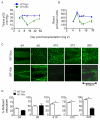
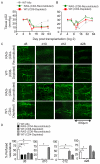
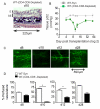

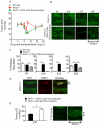
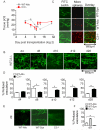
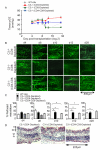
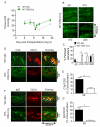
Similar articles
-
Cyclosporine Does Not Prevent Microvascular Loss in Transplantation but Can Synergize With a Neutrophil Elastase Inhibitor, Elafin, to Maintain Graft Perfusion During Acute Rejection.Am J Transplant. 2015 Jul;15(7):1768-81. doi: 10.1111/ajt.13189. Epub 2015 Feb 27. Am J Transplant. 2015. PMID: 25727073 Free PMC article.
-
Complement-mediated microvascular injury leads to chronic rejection.Adv Exp Med Biol. 2013;735:233-46. doi: 10.1007/978-1-4614-4118-2_16. Adv Exp Med Biol. 2013. PMID: 23402031 Free PMC article. Review.
-
Microvascular destruction identifies murine allografts that cannot be rescued from airway fibrosis.J Clin Invest. 2007 Dec;117(12):3774-85. doi: 10.1172/JCI32311. J Clin Invest. 2007. PMID: 18060031 Free PMC article.
-
Adenovirus-mediated HIF-1α gene transfer promotes repair of mouse airway allograft microvasculature and attenuates chronic rejection.J Clin Invest. 2011 Jun;121(6):2336-49. doi: 10.1172/JCI46192. Epub 2011 May 23. J Clin Invest. 2011. PMID: 21606594 Free PMC article.
-
New concepts of complement in allorecognition and graft rejection.Cell Immunol. 2007 Jul;248(1):18-30. doi: 10.1016/j.cellimm.2007.04.009. Epub 2007 Oct 24. Cell Immunol. 2007. PMID: 17950717 Free PMC article. Review.
Cited by
-
Targeting Interleukin-10 Restores Graft Microvascular Supply and Airway Epithelium in Rejecting Allografts.Int J Mol Sci. 2022 Jan 23;23(3):1269. doi: 10.3390/ijms23031269. Int J Mol Sci. 2022. PMID: 35163192 Free PMC article.
-
Tissue-targeted complement therapeutics.Mol Immunol. 2018 Oct;102:120-128. doi: 10.1016/j.molimm.2018.06.005. Epub 2018 Jul 7. Mol Immunol. 2018. PMID: 30220307 Free PMC article. Review.
-
Graft microvascular disease in solid organ transplantation.J Mol Med (Berl). 2014 Aug;92(8):797-810. doi: 10.1007/s00109-014-1173-y. Epub 2014 Jun 1. J Mol Med (Berl). 2014. PMID: 24880953 Free PMC article. Review.
-
T-regulatory cell-mediated immune tolerance as a potential immunotherapeutic strategy to facilitate graft survival.Blood Transfus. 2013 Jul;11(3):357-63. doi: 10.2450/2013.0258-12. Epub 2013 May 7. Blood Transfus. 2013. PMID: 23736920 Free PMC article. Review. No abstract available.
-
Bronchial anastomotic complications as a microvascular disruption in a mouse model of airway transplantation.Front Immunol. 2025 May 14;16:1567657. doi: 10.3389/fimmu.2025.1567657. eCollection 2025. Front Immunol. 2025. PMID: 40438113 Free PMC article. Review.
References
-
- Libby P, Pober JS. Chronic rejection. Immunity. 2001;14(4):387–397. - PubMed
-
- Ozdemir BH, Demirhan B, Ozdemir FN, Dalgic A, Haberal M. The role of microvascular injury on steroid and OKT3 response in renal allograft rejection. Transplantation. 2004;78(5):734–740. - PubMed
-
- Luckraz H, Goddard M, McNeil K, Atkinson C, Charman SC, Stewart S, Wallwork J. Microvascular changes in small airways predispose to obliterative bronchiolitis after lung transplantation. J Heart Lung Transplant. 2004;23(5):527–531. - PubMed
-
- Luckraz H, Goddard M, McNeil K, Atkinson C, Sharples LD, Wallwork J. Is obliterative bronchiolitis in lung transplantation associated with microvascular damage to small airways? Ann Thorac Surg. 2006;82(4):1212–1218. - PubMed
Publication types
MeSH terms
Substances
Grants and funding
LinkOut - more resources
Full Text Sources
Other Literature Sources
Research Materials
Miscellaneous

